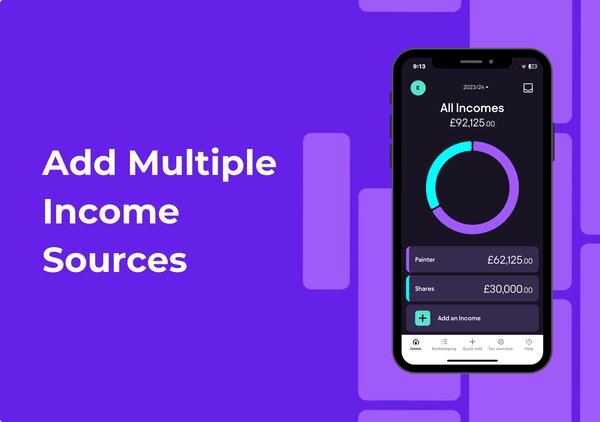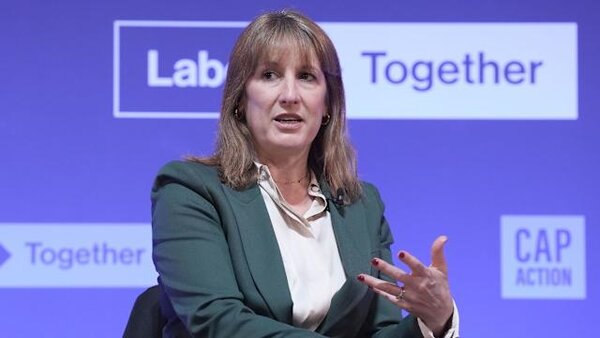Lets get started...
Tax season can be a real headache when you own several rental properties. Trying to figure out where everything goes on your Self Assessment form might leave you scratching your head, especially when juggling multiple income streams.
Don't worry! Reporting multiple rental incomes isn't as scary as it seems. With a bit of know-how and organisation, you can tackle your tax return with confidence and potentially save yourself money in the process.
Let's break it down into simple steps that make sense, even if you're not a tax expert or particularly fond of paperwork.
What does reporting multiple rental incomes actually mean?
Reporting multiple rental incomes means declaring all money you receive from different properties on your Self Assessment tax return. This includes rent from houses, flats, holiday homes, and even rooms you let out in your own home.
HMRC requires you to report all your property income, whether from one house or ten. You'll need to fill in the property pages (SA105) of your tax return, but fortunately, the process is more streamlined than you might expect.
For most landlords with several UK properties, you can combine the income and expenses on a single form. That's a relief, isn't it? However, you'll need separate forms for certain situations like foreign properties or holiday lets.

What types of properties should be reported separately?
Not all rental properties are treated the same for tax purposes. Regular UK residential property can be grouped together, making your life easier and reducing the paperwork burden considerably.
But furnished holiday lettings follow different rules. They get their own special tax treatment with potential advantages, so you’ll need to report them separately to ensure you receive the correct benefits.
Overseas properties must also be reported separately from your UK rentals. They go on the foreign income section (SA106) instead of the UK property pages, reflecting the different tax considerations that apply to international investments.
Income from commercial properties, such as shops or offices, must also be reported and may have different tax considerations.
How do I combine income from similar properties?
For standard UK residential properties, HMRC lets you add all your income together. This is great news if you have multiple similar rentals as it significantly simplifies your reporting requirements.
Simply total up all the rent you’ve received across your properties during the tax year. Your 'gross income' from rental properties is the total amount received before expenses, and this figure is important for determining reporting requirements under Making Tax Digital. Do the same with your expenses, though you should maintain separate underlying records for each property in case HMRC requests a breakdown.
It’s essential to focus on keeping financial records that are accurate and up to date to ensure compliance and accurate reporting. This combined approach saves you loads of time and reduces complexity. Instead of filling out details for each property individually, you just need one set of figures representing your entire standard UK portfolio.
Accurately reporting property income to HMRC is increasingly important, especially as digital reporting requirements expand under Making Tax Digital.
What about allowable expenses across multiple properties?
You can claim expenses that directly relate to your rental business. This includes mortgage interest (though restrictions apply), insurance, repairs, agent fees, and utility bills across your entire property portfolio. These are known as allowable expenses, meaning they can be deducted from your rental income to reduce your taxable profits.
When an expense covers multiple properties, you’ll need to split it fairly. For example, if insurance covers three properties, divide the cost appropriately based on factors like property value or square footage.
Keep detailed records showing how you’ve allocated shared costs. These are considered tax expenses and must be properly documented to comply with HMRC regulations. Additionally, domestic items relief allows you to claim for the replacement of furniture or appliances in furnished rental properties, replacing the previous wear and tear allowance.
This makes your life easier if HMRC ever asks questions and helps ensure you’re claiming everything you’re entitled to without overstepping.

Do I need to keep separate records for each property?
Yes! Even though you report combined figures, you must keep separate records for each property. This includes income, expenses, and any improvements you make to individual properties.
Create a simple system for tracking each property’s performance. Spreadsheets work well for many landlords, or you might prefer dedicated property management or accounting software if your portfolio is growing, as these tools can automate record-keeping and help ensure compliance with tax regulations. Treating your property portfolio as your own business means diligent record-keeping and careful expense tracking are essential.
Good record-keeping makes tax time so much easier and provides valuable insights into your business. It also helps you spot which properties are performing well and which might need attention or reconsideration. If a property makes a loss, you may be able to carry forward that loss to offset against future rental profits.
How do I handle UK and overseas properties?
UK and overseas properties must be reported separately on your Self Assessment. They go in different sections of your tax return because they’re subject to different tax rules and considerations, and these details must be included in your assessment tax returns.
For UK properties, use the UK property pages (SA105). For overseas rentals, complete the foreign income section (SA106), making sure to convert any foreign currency into pounds sterling using the average exchange rate for the tax year.
If you own property jointly with someone else, you must report only your share of the income and expenses. Jointly owned property has specific reporting requirements, especially under Making Tax Digital, which may include certain easements for digital record-keeping and quarterly reporting.
If you’ve paid tax on your overseas property income in another country, you might qualify for relief to avoid being taxed twice. This is worth investigating if you have international property investments.
What about the Rent a Room scheme?
If you rent out a furnished room in your main home, you might qualify for the Rent a Room scheme. This gives you tax-free income up to £7,500 per year, which can be a significant benefit.
This scheme works differently from traditional rental income and requires separate reporting. If you qualify, you don’t pay tax on income below the threshold, potentially saving you hundreds or thousands in tax. However, if your income from renting a room exceeds the threshold, you will need to pay income tax on the amount above £7,500.
You can choose whether to use the scheme or not each tax year, depending on which gives you the better tax outcome. I’ve personally saved over £1,200 in tax one year by opting into this scheme for a room I let in my London flat.
What common mistakes should I avoid?
A frequent error is mixing up different types of property income. Keep residential, holiday lets, and foreign properties separate to ensure you’re applying the correct tax rules to each category.
Another mistake is forgetting to report all your properties or assuming a property that made a loss doesn’t need reporting. Even loss-making properties must be included, as these losses can often be offset against your taxable income from property in future years.
If you are a non-resident landlord, your letting agent or tenant may be required to deduct tax from your rental income before passing it on to you under the Non-Resident Landlord Scheme.
Don’t claim expenses you’re not entitled to. Personal costs or improvements (rather than repairs) aren’t allowable expenses, and claiming them incorrectly could lead to penalties if discovered during an HMRC investigation. Always seek professional advice to ensure you claim only legitimate expenses and to help reduce tax liability legally.

When are the deadlines for reporting rental income on your self assessment tax return?
For online Self Assessment submissions, the deadline is January 31st following the tax year. So for the 2023/24 tax year, you'd need to file by January 31st, 2025 to avoid penalties.
Missing this deadline results in an immediate £100 fine, with additional penalties the longer you delay. These can add up quickly, so it's worth marking the date clearly in your calendar.
If you're new to property letting, you must register for Self Assessment by October 5th following the tax year in which you started letting property. This earlier deadline catches many new landlords out, so take note.
How can I make the whole process easier?
Start by keeping organised records throughout the year. Don’t leave everything until tax season, as this approach inevitably leads to stress and potential errors in your submission.
Consider using dedicated software to track your rental income and expenses. If you run a property business, your rental income is considered 'business income' for tax purposes, so accurate tracking is essential. This makes reporting much simpler when the time comes and helps ensure you don’t miss potential deductions.
Using software also helps you stay compliant with HMRC requirements, and paying tax on time is crucial to avoid penalties.
Pie is the UK’s first personal tax app designed specifically for working individuals dealing with tax burdens. It offers integrated bookkeeping, real-time tax figures, and simplified tax return processing for landlords with multiple properties. These tools can also help you estimate and manage your tax bills throughout the year.

Quick and Easy Guide to Track Property Income and Expenses in the Pie App
Follow these steps to get started:
Once you’ve created an income source, you can proceed to the bookkeeping section of the app on your navigation bar. Swipe right on any eligible transaction to add it as an Income & expense you want to declare on your tax return, moving it to the 'income' & ‘expense’ tab.Step 1

After adding all the information, you can view your real-time figures on the homepage of the Pie Tax App.Step 2












